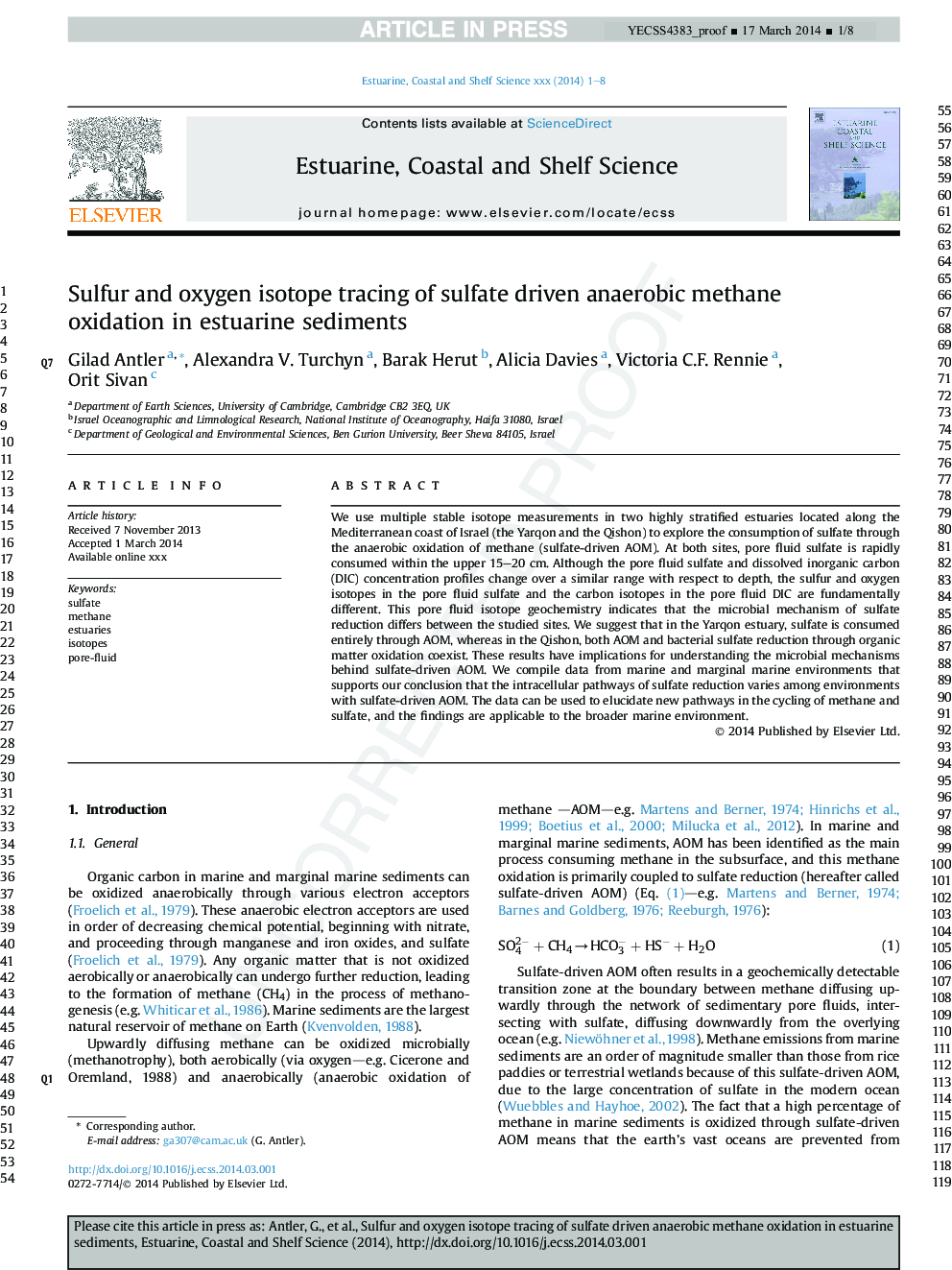| Article ID | Journal | Published Year | Pages | File Type |
|---|---|---|---|---|
| 6384919 | Estuarine, Coastal and Shelf Science | 2014 | 8 Pages |
Abstract
We use multiple stable isotope measurements in two highly stratified estuaries located along the Mediterranean coast of Israel (the Yarqon and the Qishon) to explore the consumption of sulfate through the anaerobic oxidation of methane (sulfate-driven AOM). At both sites, pore fluid sulfate is rapidly consumed within the upper 15-20Â cm. Although the pore fluid sulfate and dissolved inorganic carbon (DIC) concentration profiles change over a similar range with respect to depth, the sulfur and oxygen isotopes in the pore fluid sulfate and the carbon isotopes in the pore fluid DIC are fundamentally different. This pore fluid isotope geochemistry indicates that the microbial mechanism of sulfate reduction differs between the studied sites. We suggest that in the Yarqon estuary, sulfate is consumed entirely through AOM, whereas in the Qishon, both AOM and bacterial sulfate reduction through organic matter oxidation coexist. These results have implications for understanding the microbial mechanisms behind sulfate-driven AOM. Our data compilation from marine and marginal marine environments supports the conclusion that the intracellular pathways of sulfate reduction varies among environments with sulfate-driven AOM. The data can be used to elucidate new pathways in the cycling of methane and sulfate, and the findings are applicable to the broader marine environment.
Related Topics
Physical Sciences and Engineering
Earth and Planetary Sciences
Geology
Authors
Gilad Antler, Alexandra V. Turchyn, Barak Herut, Alicia Davies, Victoria C.F. Rennie, Orit Sivan,
